When enterprise companies face the challenge of scaling their digital presence, traditional SEO approaches often fall short. You’re not dealing with a simple website anymore—you’re orchestrating a complex digital ecosystem that demands precision, coordination, and strategic thinking at every level.
The stakes couldn’t be higher. Organic search leads close at a remarkable 14.6% rate compared to just 1.7% for outbound leads. For large businesses, this difference translates to millions in revenue potential. Yet most enterprise SEO strategies fail because they treat massive organizations like scaled-up small companies.
This comprehensive guide reveals the blueprint that separates successful corporate SEO initiatives from those that drain budgets without delivering results. We’ll explore the seven pillars that drive enterprise search optimization success and provide you with actionable frameworks you can implement immediately.
Enterprise SEO Fundamentals: What Sets Giants Apart
Enterprise SEO represents a fundamentally different approach to search engine optimization than what works for smaller organizations. It’s not just about having more resources—it’s about managing complexity that would overwhelm traditional SEO frameworks.
Defining Enterprise SEO Beyond Basic Optimization
Enterprise SEO encompasses the strategic coordination of search engine optimization across multiple departments, product lines, and often international markets. Unlike traditional SEO, which focuses on a single website or brand, corporate SEO must align diverse business units while maintaining consistent online visibility across all relevant platforms.
Consider how a multinational firm like Microsoft approaches SEO. They’re not optimizing one product page—they’re coordinating SEO strategy across Azure, Office 365, Xbox, and dozens of other product lines. Each requires different keyword research, content creation approaches, and technical SEO considerations.
The complexity multiplies when you factor in different audiences. Enterprise companies serve multiple stakeholder groups: decision-makers, end-users, partners, and investors. Each group searches differently, uses different terminology, and requires tailored content experiences.

Scale Challenges That Make or Break Large Organizations
Large-scale SEO presents unique challenges that small businesses often do not encounter. Enterprise companies usually manage websites with millions of pages, making traditional SEO management approaches impossible.
Here’s what enterprise search optimization must address:
- Content governance across hundreds of content creators
- Technical SEO maintenance for complex site architectures
- Link-building strategies that don’t compromise brand reputation
- International SEO strategy coordination across multiple regions
- Integration with existing enterprise software systems
The sheer volume creates its own problems. When HubSpot analyzed enterprise companies, they found that organizations with active blogs generate 126% more leads. However, scaling content creation to thousands of pieces monthly while maintaining quality standards requires sophisticated content governance systems.
Resource Allocation vs. ROI: The Enterprise Dilemma
Enterprise SEO budgets often dwarf those of smaller competitors, but resources can become diffused across too many initiatives. Innovative large businesses concentrate their efforts where organic search delivers the highest return on investment.
Data from enterprise companies shows that a focused SEO strategy outperforms scattered approaches by 300% or more. The key lies in identifying which search engine rankings improvements will drive actual business outcomes, not just vanity metrics.
Why Enterprise SEO Demands a Different Playbook
The frameworks that work for small business search engine optimization break down when applied to enterprise companies. The reasons extend far beyond simple scale—they involve fundamentally different organizational dynamics.
Multi-Department Coordination Complexities
Enterprise SEO success requires unprecedented collaboration between traditionally siloed departments. Marketing teams must work closely with IT on technical SEO, while sales teams provide insights for keyword research, and legal teams review content creation for compliance.
This coordination challenge becomes evident when implementing structured data markup. A small business might add schema markup in an afternoon. Enterprise companies require approval processes, testing protocols, and rollback procedures that can span multiple quarters during implementation.
The most successful corporate SEO initiatives establish clear governance structures. They define who owns different aspects of SEO management, create standardized approval processes, and implement communication protocols that prevent crucial optimizations from stalling in bureaucratic loops.

Legacy System Integration Nightmares
Enterprise companies rarely start with a clean slate. Their digital ecosystems evolved over decades, incorporating content delivery networks, customer relationship management systems, and custom applications that weren’t designed with search engine optimization in mind.
These legacy systems create technical SEO challenges that are not present in newer organizations. Site speed optimization becomes complex when you’re working around mainframe integrations. Mobile responsiveness requires careful consideration of how responsive design impacts enterprise applications.
301 redirects present particular complexity in enterprise environments. When companies merge, rebrand, or restructure, they often need to implement thousands of redirects while ensuring that critical business applications continue to function correctly.
Compliance and Brand Safety at Scale
Enterprise companies face regulatory requirements that dramatically impact their SEO strategy. Financial services companies must ensure their content creation complies with SEC regulations. Healthcare organizations navigate HIPAA requirements. International large businesses deal with GDPR and other data privacy laws.
These constraints affect every aspect of enterprise search optimization. Keyword research must consider legal terminology requirements. Content diversification strategies need legal review. Even link-building campaigns require vetting to ensure partner sites meet corporate compliance standards.
Brand safety considerations extend beyond legal requirements. Enterprise companies must protect their reputation across every search engine results page where they appear. This means implementing sophisticated monitoring systems and rapid response protocols for organic search reputation management.
International Market Penetration Requirements
Multinational firms face SEO challenges that domestic companies never encounter. They must optimize for different search engines (Baidu in China, Yandex in Russia), understand cultural search behaviors, and implement technical SEO solutions, such as hreflang tags, correctly.
The complexity compounds when different regions have different product offerings, pricing structures, or legal requirements. Content creation strategies must account for local market conditions while maintaining global brand consistency.

Enterprise vs. Traditional SEO: The Critical Distinctions
Understanding these differences helps explain why enterprise SEO requires specialized approaches and why traditional SEO service providers often struggle with large-scale SEO implementations.
Budget Allocation and Decision-Making Hierarchies
Traditional SEO typically involves straightforward budget approval processes. Enterprise companies navigate complex approval hierarchies where SEO management decisions require sign-off from multiple vice presidents, legal teams, and IT security groups.
This complexity affects project timelines and resource allocation. While small businesses can quickly pivot their SEO strategy, enterprise companies must build consensus across stakeholder groups. Innovative corporate SEO teams factor these realities into their planning processes.
Budget allocation in enterprise SEO follows different patterns. Rather than allocating fixed monthly retainers to SEO service providers, large businesses often fund specific initiatives or quarters. This requires SEO management teams to demonstrate precise ROI projections and milestone achievements.
Technology Stack Dependencies
Enterprise companies operate complex technology stacks that create both opportunities and constraints for search engine optimization. They might have sophisticated content delivery networks that enable faster site speed. Still, they also have security requirements that limit technical SEO implementations.
Enterprise search engine marketing must integrate with existing marketing automation platforms, customer relationship management systems, and business intelligence tools. This integration capability often determines which SEO tools and resources enterprises can effectively deploy.
The most successful enterprise SEO initiatives leverage these technological advantages while working around constraints. They utilize enterprise-grade analytics platforms to demonstrate the impact of SEO on business outcomes and integrate search engine optimization data with other marketing channels for comprehensive attribution modeling.

Risk Management and Testing Protocols
Enterprise companies can’t afford to break critical business functions while optimizing for search engine rankings. They implement testing protocols that would seem excessive for smaller organizations but are essential for maintaining business continuity.
A/B testing in enterprise SEO might involve sophisticated statistical analysis to ensure changes don’t negatively impact conversion rates. Technical SEO implementations require extensive staging environments and rollback procedures.
These protocols slow initial implementation but prevent costly mistakes. Enterprise companies that skip proper testing often face scenarios where SEO improvements inadvertently break e-commerce functionality or customer portals.
The Seven Pillars of Enterprise SEO Excellence
Successful enterprise SEO strategies rest on seven interconnected pillars. Each pillar requires specialized approaches that account for the scale and complexity of large businesses.
Strategic Content Architecture
Content creation at enterprise scale demands systematic approaches that most SEO service providers aren’t equipped to handle. Enterprise companies must coordinate content strategy across multiple teams while maintaining quality standards and brand consistency.
Multi-Persona Content Mapping
Enterprise companies serve diverse audiences with different information needs, search behaviors, and conversion paths. Content creation strategies must account for C-level executives, technical implementers, end-users, and purchasing decision-makers—often within the same buying process.
Effective multi-persona content mapping begins with a comprehensive analysis of user intent. Enterprise SEO teams analyze search behavior data to understand how different personas progress through research and purchase cycles. They identify content gaps where high-quality content could influence buying decisions.
The most sophisticated enterprise companies create content matrices that map persona types against buying journey stages. This ensures that content diversification serves business objectives rather than just targeting keyword research.

Enterprise Keyword Research at Scale
Targeted keyword research for enterprise companies extends far beyond traditional volume and competition metrics. Enterprise SEO teams must consider brand protection, competitive positioning, and aligning business priorities.
Long-tail keywords become particularly important in enterprise search optimization. While small businesses might focus on high-volume generic terms, enterprise companies often derive more value from specific, high-intent queries that align with their solution offerings.
Effective enterprise keyword research incorporates:
- Competitive analysis across multiple business verticals
- Industry-specific terminology and acronyms
- Regional search behavior variations
- Product lifecycle stage considerations
- Sales team feedback on prospect language patterns
Content Production Workflows for Large Teams
Enterprise companies need content governance systems that maintain quality while enabling scale. Traditional editorial processes break down when hundreds of contributors create content across multiple departments.
Successful content creation workflows establish clear approval hierarchies, enforce brand guidelines, and incorporate quality assurance checkpoints. They implement content management systems that integrate with SEO tools and resources to ensure optimization opportunities aren’t missed.
Content governance also addresses the challenges of duplicate content that plague large businesses. Multiple departments might create similar content without coordination, diluting search engine rankings. Innovative enterprise SEO strategies include content audit processes and the implementation of canonical tags.
Quality Assurance Systems That Actually Work
Enterprise companies can’t rely on manual content creation review processes. They need automated systems that flag potential issues before content is published.
Effective quality assurance systems check for:
- SEO optimization completeness (title tags, meta descriptions, structured data markup)
- Brand guideline compliance
- Legal and compliance requirement adherence
- Duplicate content conflicts
- User experience standards
- Mobile responsiveness compatibility

Content Performance Analytics Integration
Enterprise SEO success requires sophisticated measurement approaches that connect content creation performance with business outcomes. Large businesses need to understand which content strategy elements drive lead generation, customer acquisition, and revenue growth.
Advanced enterprise companies integrate content performance data with customer relationship management systems to track the influence of content on deal progression. They measure how blog posts, whitepapers, and other content assets contribute to pipeline generation and deal velocity.
Authority Building Through Strategic Link Acquisition
Link building for enterprise companies operates under different constraints and opportunities than traditional approaches. Corporate SEO teams must strike a balance between aggressive link acquisition and brand reputation protection.
Executive Relationship Leverage for Link Building
Enterprise companies possess unique link-building advantages through executive relationships, industry partnerships, and thought leadership opportunities. Innovative corporate SEO strategies systematically leverage these relationships.
C-level executives at large businesses often participate in industry conferences, advisory boards, and professional organizations. These activities create natural link-building opportunities that smaller competitors can’t access.
The key lies in coordinating these relationship-building activities with the SEO strategy. Enterprise companies should brief executives on link-building objectives before industry events and provide them with linkable assets that demonstrate thought leadership.
Industry Partnership Link Opportunities
Enterprise companies maintain partnership ecosystems that create substantial link-building potential. Technology vendors, consulting partners, and strategic alliances all represent opportunities for natural backlinks.
However, partnership link building requires careful coordination to avoid appearing manipulative to search engines. The most effective approaches focus on creating genuinely valuable resources that partners want to reference and cite.
Case studies represent compelling opportunities for link building among enterprise companies. When properly promoted, comprehensive case studies attract backlinks from industry publications, partner websites, and even competitors who reference the data.
Internal Link Architecture for Large Sites
Internal linking becomes exponentially more complex for enterprise companies with millions of pages. Traditional internal linking strategies often fail to scale with enterprise website architectures.
Enterprise companies need systematic approaches to internal linking that:
- Distribute link equity to business-critical pages
- Help search engines understand site architecture
- Guide users through complex information hierarchies
- Support multiple conversion paths
Effective internal linking strategies for large businesses often involve automated systems that suggest relevant links based on content topics, user behavior patterns, and business priorities.

Link Risk Assessment and Monitoring Systems
Enterprise companies face significant reputation risks from toxic backlinks or black-hat SEO practices. They need sophisticated monitoring systems that identify potential issues before they impact search engine rankings.
Link monitoring for enterprise SEO goes beyond simple backlink analysis. It includes:
- Competitor backlink analysis to identify new opportunities
- Toxic link identification and disavowal processes
- Partner site quality monitoring
- Brand mention tracking across the web
- Link equity flow analysis for site architecture optimization
Technical Infrastructure Optimization
Technical SEO for enterprise companies presents challenges that are not present in smaller organizations. Large businesses must optimize complex technology stacks while maintaining business continuity and security standards.
Core Web Vitals at Enterprise Scale
Site speed optimization becomes exponentially more complex for enterprise companies with diverse technology requirements. While small businesses might optimize a few key pages, enterprise companies must ensure consistent load speed across thousands of pages and multiple user paths.
Core Web Vitals optimization for large businesses often requires:
- Content delivery network optimization across global regions
- Image optimization strategies for millions of assets
- Browser caching policies that balance performance with content freshness
- Server response time improvements across multiple data centers
Enterprise companies that excel in technical SEO implement monitoring systems to track Core Web Vitals performance continuously. They set up automated alerts when performance degrades and maintain rapid response protocols for critical issues.
Mobile-First Indexing for Complex Sites
Mobile responsiveness presents unique challenges for enterprise companies with complex functionality requirements. Responsive design must accommodate everything from simple informational pages to sophisticated application interfaces.
Enterprise companies need mobile optimization strategies that prioritize business-critical user paths while ensuring comprehensive mobile-friendly experiences. This often requires flexible grid layouts and touch-friendly interactions that work across diverse content types.
The most successful enterprise SEO implementations continuously test mobile responsiveness across various devices, browsers, and connection speeds. They prioritize optimization efforts based on actual user behavior data rather than generic best practices.

Schema Markup Strategy for Multiple Business Lines
Implementing structured data markup for enterprise companies requires coordination across multiple product lines, each with distinct schema markup requirements. Large businesses might need JSON-LD implementations for products, services, articles, events, and organizational information.
Enterprise companies benefit most from systematic, structured data markup approaches that:
- Standardize schema markup implementation across business units
- Automate rich snippets optimization where possible
- Monitor schema markup effectiveness through search engine results pages analysis
- Coordinate with development teams to ensure structured data markup persists through site updates
Site Architecture for Crawl Efficiency
Enterprise companies with millions of pages must ensure search engines can crawl and index their most crucial content efficiently. Site architecture decisions significantly impact how search engines discover and rank enterprise content.
Effective crawlability optimization for large businesses includes:
- XML sitemap management for complex site hierarchies
- Robot.txt optimization that guides the crawler’s focus
- URL structure standardization across business units
- Page load speed optimization for crawler efficiency
- Internal linking strategies that support crawler discovery
Data Integration and Analytics Mastery
Enterprise SEO success relies on sophisticated data analysis capabilities that link search engine optimization performance to business outcomes. Large businesses need measurement frameworks that demonstrate clear ROI and guide strategic decisions.
CRM and SEO Data Synchronization
Enterprise companies generate enormous value by connecting SEO performance data with customer relationship management systems. This integration enables attribution analysis that shows how organic search influences deal progression and customer lifetime value.
Sophisticated enterprise SEO programs track:
- Which organic search queries generate the highest-value leads
- How search engine rankings improvements impact pipeline generation
- Content creation influence on deal velocity and close rates
- User experience factors that correlate with customer acquisition costs

Attribution Modeling for Multi-Touch Journeys
Enterprise companies serve customers through complex buying journeys that often involve multiple touchpoints across months or years. Traditional last-click attribution significantly undervalues SEO contribution to enterprise companies.
Advanced attribution modeling for enterprise SEO considers:
- Organic search influence on initial awareness generation
- Content creation’s impact on the consideration stage progression
- Search engine rankings’ effect on competitive evaluations
- User experience factors that influence final purchase decisions
Predictive Analytics for SEO Forecasting
Enterprise companies benefit from predictive analytics that forecast SEO performance based on planned investments and market trends. These forecasting capabilities enable more effective budget allocation and informed strategic planning.
Predictive SEO analytics for large businesses might include:
- Traffic growth projections based on content creation plans
- Revenue impact estimates for technical SEO improvements
- Competitive analysis that predicts market share shifts
- Seasonal trending analysis for capacity planning
Cross-Department Alignment Systems
Enterprise SEO success requires unprecedented collaboration between traditionally independent departments. Large businesses must create governance structures that enable coordination without stifling innovation.
Sales and SEO Integration Protocols
Enterprise companies generate tremendous value by aligning their SEO strategy with insights from the sales team. Sales professionals understand the language patterns, common objections, and information needs of prospects, which should inform content creation and keyword research.
Effective sales and SEO integration includes:
- Regular feedback sessions between sales and SEO management teams
- Content creation requests based on frequently asked prospect questions
- Keyword research informed by sales conversation analysis
- Lead generation tracking that connects organic search with sales outcomes
Product Team Collaboration Frameworks
Enterprise companies with multiple product lines need systematic approaches for coordinating SEO strategy across product teams. Each product may have a different target audience, competitive landscape, and business objective.
Product team collaboration for enterprise SEO should include:
- Standardized SEO requirements for product launches
- Content creation coordination to avoid duplicate content issues
- Technical SEO guidelines that work across product architectures
- Performance measurement frameworks that align with product KPIs
Executive Reporting That Drives Action
Enterprise SEO teams must effectively communicate performance and opportunities to executive stakeholders who may not fully understand the details of search engine optimization. Effective reporting focuses on business impact rather than SEO metrics.
Executive reporting for enterprise companies should emphasize:
- Revenue growth attributable to SEO improvements
- Market share gains through search engine rankings improvements
- Customer acquisition cost reductions from organic search optimization
- Competitive advantages gained through SEO strategy execution

Risk Management and Crisis Response
Enterprise companies face unique risks from SEO activities and algorithm updates. They require sophisticated risk management frameworks that safeguard business continuity while facilitating growth.
Algorithm Update Preparation Protocols
Search engine algorithm updates can have a significant impact on enterprise companies with millions of pages and substantial organic search traffic. Large businesses require preparation protocols that minimize disruptions and enable rapid responses.
Algorithm update preparation should include:
- Performance monitoring systems that detect traffic changes immediately
- Content audit processes that identify potential quality issues
- Technical SEO review protocols that ensure compliance with best practices
- Communication plans that keep stakeholders informed during volatility
Reputation Management Integration
Enterprise companies must protect their brand reputation across all search engine results pages where they appear. Reputation management integration with an SEO strategy ensures that organic search results support, rather than undermine, brand positioning.
Integrated reputation management includes:
- Content creation strategies that address common misconceptions or concerns
- Social media coordination to ensure consistent messaging
- Crisis communication protocols for negative search engine results pages
- Proactive content development that establishes thought leadership
Legal Compliance in SEO Content
Enterprise companies operate under regulatory requirements that significantly impact content creation and SEO strategy. Legal compliance must be built into SEO management processes rather than treated as an afterthought.
Legal compliance considerations for enterprise SEO include:
- Industry-specific regulatory requirements (financial services, healthcare, etc.)
- International data privacy laws (GDPR, CCPA, etc.)
- Advertising standards and disclosure requirements
- Intellectual property protection in content creation
Building Your Enterprise SEO Implementation Roadmap
Enterprise companies need systematic implementation approaches that account for organizational complexity and change management requirements. This roadmap provides a framework for large-scale SEO success.
Phase 1: Foundation Assessment and Quick Wins (Months 1-3)
Enterprise SEO implementations should begin with comprehensive audits that identify immediate opportunities and systemic issues. This foundation phase establishes baselines and generates early momentum.
Foundation phase activities include:
- Technical SEO audit across all business units and domains
- Content creation audit to identify gaps and duplicate content issues
- Competitor analysis across all relevant business verticals
- Keyword research to establish target lists for each business unit
- Analytics implementation to ensure accurate performance measurement
Quick wins during the foundation phase might include:
- Title tag and meta description optimization for high-traffic pages
- Site speed improvements through image optimization and browser caching
- Internal linking improvements for business-critical pages
- Schema markup implementation for key content types
- Mobile responsiveness fixes for problematic page types

Phase 2: Systems Integration and Process Development (Months 4-8)
During this phase, enterprise companies must establish scalable processes and systems. The focus shifts from individual optimizations to systematic approaches that can support long-term growth.
Systems integration priorities include:
- Content governance workflows that ensure SEO optimization
- Analytics integration with business intelligence systems
- Link-building processes that leverage enterprise relationships
- Performance monitoring systems with automated alerting
- Cross-department collaboration protocols
Process development should address:
- Content creation workflows that maintain quality at scale
- Technical SEO maintenance procedures for ongoing optimization
- Risk management protocols for algorithm updates and other disruptions
- Reporting frameworks that communicate value to executive stakeholders
Phase 3: Scale Optimization and Advanced Tactics (Months 9-12)
Enterprise companies can implement sophisticated SEO tactics once foundational systems are established. This phase focuses on competitive advantages and market leadership.
Advanced tactics for enterprise SEO might include:
- Predictive analytics for SEO forecasting and planning
- Artificial intelligence integration for content creation and optimization
- International SEO expansion into new markets
- Voice search optimization for emerging search behaviors
- Enterprise app optimization for mobile-first indexing
Scale optimization efforts should address:
- Automation opportunities that reduce manual SEO management overhead
- Performance improvements that support millions of page optimizations
- Advanced analytics that connect SEO performance with business outcomes
- Competitive intelligence systems that guide strategic decisions
Phase 4: Continuous Innovation and Market Leadership (Ongoing)
Enterprise companies that achieve SEO success must continually innovate to maintain a competitive advantage. This ongoing phase focuses on market leadership and emerging opportunities.
Continuous innovation areas include:
- Emerging technology integration (AI, machine learning, etc.)
- New search channel optimization (visual search, voice search, etc.)
- Advanced user experience optimization based on behavioral data
- Predictive SEO strategies that anticipate market changes

Common Enterprise SEO Pitfalls (And How to Avoid Them)
Enterprise companies face unique challenges that can derail even well-funded SEO initiatives. Understanding these pitfalls helps large businesses avoid costly mistakes.
Over-Engineering Simple Solutions
Enterprise companies sometimes create unnecessarily complex solutions for straightforward SEO challenges. While thorough planning is essential, over-engineering can delay implementations and reduce effectiveness.
Common over-engineering examples include:
- Content creation approval processes that take months for simple blog posts
- Technical SEO implementations that require extensive custom development
- Analytics systems that generate more data than stakeholders can process
- Link-building strategies that require extensive legal review for standard practices
Avoiding over-engineering requires striking a balance between enterprise requirements and SEO best practices. Large businesses should implement solutions that meet compliance requirements while enabling rapid iteration and optimization.
Ignoring User Intent for Keyword Volume
Enterprise companies sometimes focus on high-volume keywords that don’t align with user intent or business objectives. While keyword research is essential, aligning with user intent drives better business outcomes.
User intent optimization for enterprise companies should prioritize:
- Keywords that align with actual customer language patterns
- Search queries that indicate high purchase intent
- Long-tail keywords that reflect specific solution needs
- Content creation that addresses the complete customer information needs
Technology Adoption Without Strategy
Enterprise companies have access to sophisticated SEO tools and resources; however, technology adoption without strategic planning often reduces their effectiveness. Large businesses need clear implementation strategies before adopting new SEO technologies.
Strategic technology adoption requires:
- Clear understanding of business problems that technology should solve
- Integration planning with existing enterprise systems
- Training programs that ensure effective technology utilization
- Performance measurement frameworks that demonstrate technology ROI

Siloed Optimization Efforts
Enterprise companies often struggle with siloed optimization efforts where different departments optimize independently without coordination. This approach reduces overall SEO effectiveness and can create conflicts.
Coordinated optimization approaches should include:
- Cross-department communication protocols for SEO planning
- Shared analytics platforms that provide unified performance views
- Content governance systems that prevent duplicate content conflicts
- Technical SEO standards that apply across all business units
Measuring Enterprise SEO Success: Beyond Rankings
Enterprise companies need sophisticated measurement approaches that demonstrate clear business value from SEO investments. Traditional SEO metrics provide insufficient insight for large business decision-making.
Revenue Attribution Models That Work
Enterprise companies must connect SEO performance with revenue generation to justify continued investment. Revenue attribution for enterprise SEO necessitates sophisticated analytical approaches that account for the complexities of customer journeys.
Effective revenue attribution models track:
- First-touch attribution for SEO influence on initial awareness
- Multi-touch attribution that credits SEO throughout customer journeys
- Customer lifetime value impact from organic search acquisition
- Deal velocity improvements attributable to SEO content
Market Share Analysis Through Search Visibility
Enterprise companies can measure competitive positioning through search visibility analysis across relevant keyword sets. This approach offers valuable insights into market share trends and potential competitive threats.
Market share analysis through SEO should examine:
- Search engine rankings performance across competitor keywords
- Organic search traffic share within industry verticals
- Content creation gaps where competitors dominate search results
- Brand visibility across industry-relevant search queries
Customer Lifetime Value Impact Measurement
Enterprise companies generate the most value from SEO when they optimize for customer lifetime value rather than just lead generation. This requires measuring the impact of organic search acquisition on long-term customer relationships.
Customer lifetime value analysis for enterprise SEO includes:
- Acquisition cost analysis for organic search vs. other channels
- Retention rate differences for SEO-acquired customers
- Upselling success rates for customers acquired through organic search
- Customer satisfaction metrics for SEO-influenced acquisitions
Competitive Intelligence Integration
Enterprise companies benefit from sophisticated competitive analysis that goes beyond simple keyword research and backlink analysis. Competitive intelligence should inform SEO strategy and identify market opportunities.
Advanced competitive intelligence for enterprise SEO examines:
- Content strategy analysis across competitor portfolios
- Technical SEO capabilities comparison
- Link-building strategy effectiveness measurement
- User experience benchmarking across competitive websites

The Future of Enterprise SEO: Preparing for What’s Next
Enterprise companies must prepare for emerging trends that will reshape the field of search engine optimization. Large businesses that anticipate these changes will maintain competitive advantages as the industry evolves.
AI Integration in Enterprise Search Strategy
Artificial intelligence will fundamentally change how enterprise companies approach SEO strategy. Large businesses should begin experimenting with AI integration for content creation, keyword research, and performance analysis.
AI opportunities for enterprise SEO include:
- Automated content creation that maintains quality standards
- Predictive keyword research based on market trend analysis
- Personalized user experience optimization at scale
- Advanced analytics that identify optimization opportunities automatically
Voice Search Optimization at Scale
Voice search represents a significant opportunity for enterprise companies with strong content creation capabilities. Large businesses can optimize for voice search by creating comprehensive, conversational content that answers specific questions.
Voice search optimization strategies should include:
- Content creation focused on question-based keywords
- Featured snippet optimization for voice search results
- Local SEO optimization for location-based voice searches
- FAQ content development that addresses common voice queries
Visual Search and Image SEO Evolution
Visual search capabilities will create new optimization opportunities for enterprise companies with substantial visual content libraries. Large businesses should optimize image content for both traditional and visual search discovery.
Visual search optimization for enterprise companies includes:
- Image optimization with descriptive alt text and file names
- Visual content creation that aligns with target keywords
- Product image optimization for e-commerce visual search
- Infographic creation that earns backlinks and social shares
Enterprise SEO success requires strategic thinking, sophisticated execution, and continuous adaptation to market changes. Large businesses that implement these frameworks systematically will achieve sustainable competitive advantages through organic search engine optimization.
The investment in enterprise SEO capabilities pays dividends across multiple business functions. Search engine optimization improvements support lead generation, reduce customer acquisition costs, and strengthen brand recognition across digital channels.
Companies ready to transform their digital marketing approach should begin by conducting comprehensive audits and developing systematic implementation plans. The complexity requires expert guidance, but the business impact justifies significant investment in enterprise search optimization capabilities.
Start your enterprise SEO transformation today. The competitive advantages await large businesses willing to commit to search engine optimization excellence.


